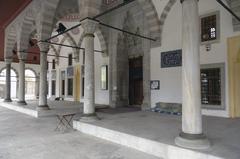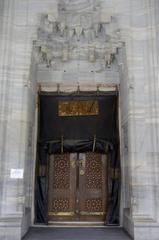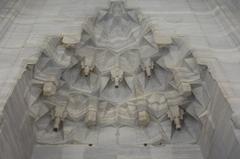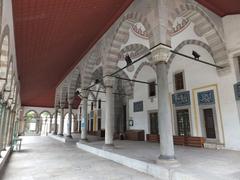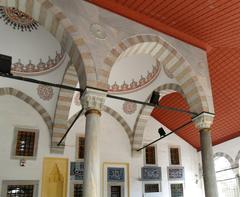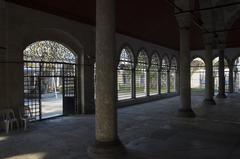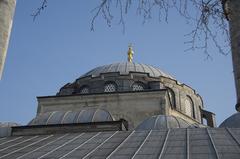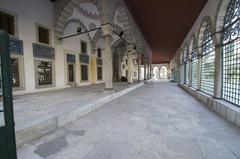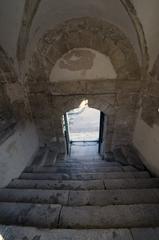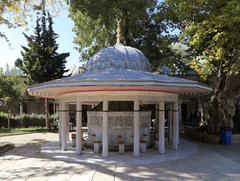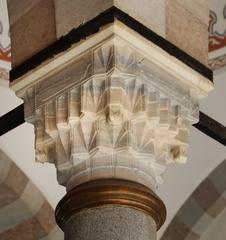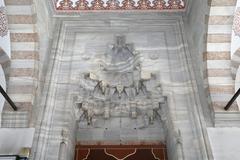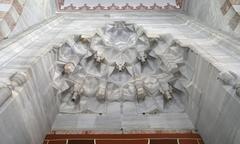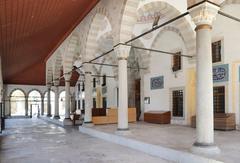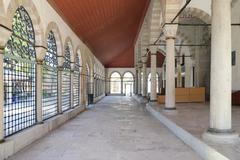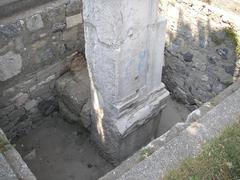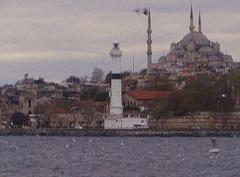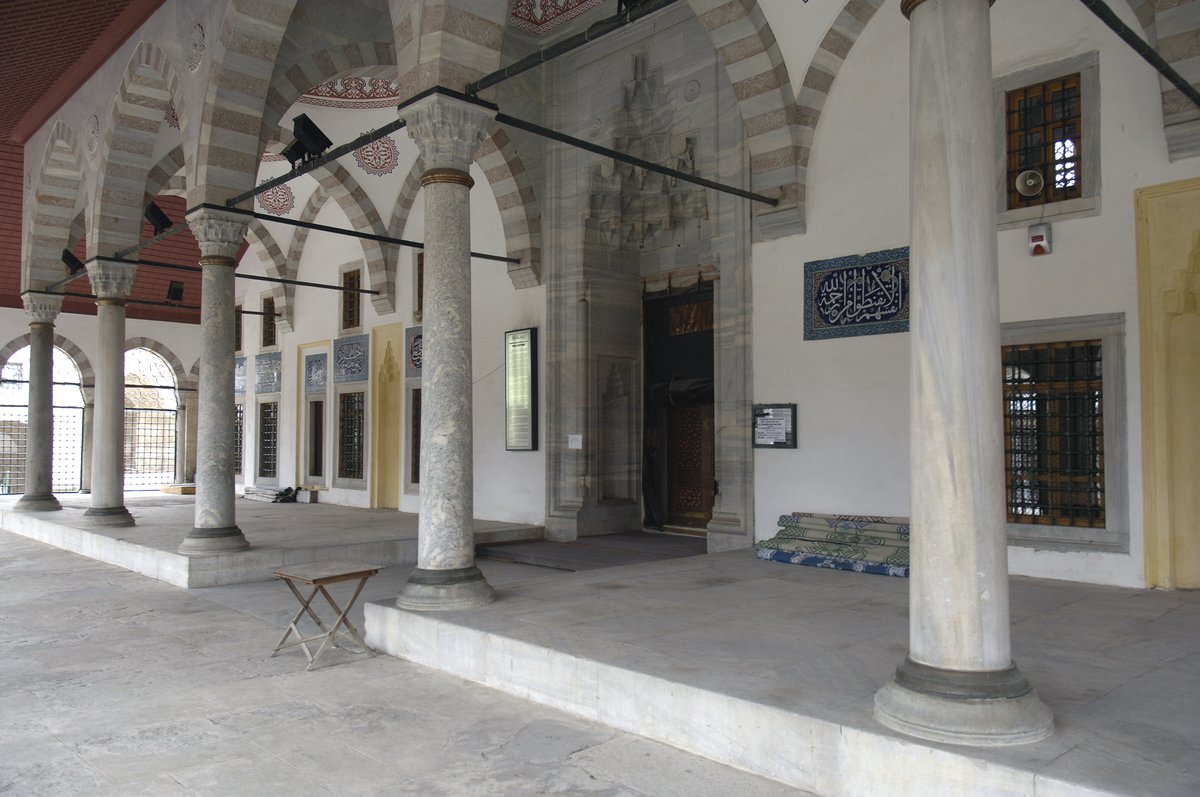
Visiting Atik Valide Cami: Hours, Tickets, and Tips
Date: 23/07/2024
Introduction
Discover the rich history, architectural brilliance, and cultural significance of the Atik Valide Mosque, an often overlooked gem located in Istanbul’s historic Üsküdar district. This comprehensive guide covers everything from its historical origins and architectural features to practical information on visiting hours, ticketing, and travel tips. Whether you’re a history enthusiast, an architecture aficionado, or a curious traveler, this guide aims to provide you with all the necessary information for an enriching visit to this Ottoman treasure. The Atik Valide Mosque, commissioned by Nurbanu Sultan and designed by the legendary Ottoman architect Mimar Sinan, stands as a testament to the architectural and cultural zenith of the Ottoman Empire, reflecting the pivotal role women of the imperial family played in the empire’s cultural patronage. With its multifaceted complex that includes a madrasa, hospital, soup kitchen, and bathhouse, the mosque was a cornerstone of social welfare and community life during its time (source).
Table of Contents
- Introduction
- History of Atik Valide Cami
- Significance of Atik Valide Cami
- Visitor Tips for Atik Valide Cami
- Conclusion
- FAQ
History of Atik Valide Cami
Foundation and Construction
Atik Valide Cami, also known as the Atik Valide Mosque, is a significant historical and architectural landmark commissioned by Nurbanu Sultan, the wife of Sultan Selim II and the mother of Sultan Murad III. The mosque, designed by the renowned Ottoman architect Mimar Sinan, was constructed between 1570 and 1579. Sinan’s architectural genius is evident in the mosque’s intricate design and structural elegance.
Architectural Significance
The Atik Valide Mosque is a quintessential example of classical Ottoman architecture. The mosque complex includes various structures such as a madrasa (Islamic school), a darüşşifa (hospital), an imaret (soup kitchen), a hamam (bathhouse), and a caravanserai (inn). The mosque itself features a large central dome flanked by semi-domes, a characteristic feature of Sinan’s style. The interior is adorned with exquisite Iznik tiles, calligraphy, and stained glass windows, creating a serene and spiritual atmosphere.
Historical Context
The construction of the Atik Valide Mosque took place during significant political and cultural development in the Ottoman Empire. The late 16th century was marked by the empire’s territorial expansion and consolidation of power. Nurbanu Sultan, as the Valide Sultan (Queen Mother), wielded considerable influence in the imperial court. Her patronage of the mosque reflects the important role that women of the Ottoman royal family played in the cultural and architectural patronage of the empire.
Restoration and Preservation
Over the centuries, the Atik Valide Mosque has undergone several restorations to preserve its structural integrity and aesthetic beauty. Notable restoration efforts were carried out in the 19th and 20th centuries. The most recent restoration, completed in the early 21st century, focused on reinforcing the mosque’s foundations, cleaning and repairing the tile work, and restoring the original color schemes of the interior decorations.
Significance of Atik Valide Cami
Religious Importance
The Atik Valide Mosque holds immense religious significance for the local Muslim community. It serves as a place of daily prayers, Friday congregational prayers, and special religious events such as Ramadan and Eid celebrations. The mosque’s complex also includes a madrasa, which historically provided religious education and continues to be a center for Islamic learning.
Cultural and Social Impact
The mosque complex, with its various facilities, played a crucial role in the social welfare of the community. The imaret provided food for the poor, the darüşşifa offered medical care, and the caravanserai accommodated travelers. These services reflect the Ottoman tradition of charitable endowments (waqf), which aimed to support the welfare of the community.
Architectural Heritage
The Atik Valide Mosque is a testament to the architectural brilliance of Mimar Sinan and the rich cultural heritage of the Ottoman Empire. The mosque’s design and construction techniques have influenced subsequent generations of architects and continue to be studied and admired by scholars and visitors alike.
Visitor Tips for Atik Valide Cami
Best Time to Visit
The Atik Valide Mosque is open to visitors throughout the year. However, the best time to visit is during the spring and autumn months (April to June and September to November), when the weather is mild and pleasant.
Visiting Hours and Tickets
The mosque is generally open from 9:00 AM to 6:00 PM. There is no entrance fee, making it accessible to all visitors. However, donations for the mosque’s upkeep are appreciated.
Dress Code and Etiquette
As the Atik Valide Mosque is an active place of worship, visitors are expected to dress modestly. Men should wear long trousers and avoid sleeveless shirts, while women should cover their heads with a scarf and wear long skirts or trousers. Shoes must be removed before entering the mosque, and visitors should remain quiet and respectful during their visit.
Guided Tours
To fully appreciate the historical and architectural significance of the Atik Valide Mosque, it is recommended to join a guided tour. Knowledgeable guides provide detailed insights into the mosque’s history, architecture, and cultural importance. Guided tours are available in multiple languages and can be booked in advance through various tour operators.
Nearby Attractions
The Atik Valide Mosque is located in the historic district of Üsküdar, which is home to several other notable landmarks. Visitors can explore the nearby Mihrimah Sultan Mosque, another masterpiece by Mimar Sinan, and the picturesque Maiden’s Tower, which offers stunning views of the Bosphorus. The bustling Üsküdar Market is also worth a visit for its vibrant atmosphere and variety of local goods.
Accessibility
The Atik Valide Mosque is easily accessible by public transportation. Visitors can take a ferry from the European side of Istanbul to Üsküdar and then walk or take a short taxi ride to the mosque. The mosque complex is wheelchair accessible, and facilities such as restrooms and seating areas are available for visitors’ convenience.
Photography
Photography is allowed in the mosque, but visitors should be mindful of their surroundings and avoid using flash photography, which can be disruptive. It is also important to respect the privacy of worshippers and avoid taking photos during prayer times.
Local Customs
Visitors should be aware of local customs and traditions when visiting the Atik Valide Mosque. It is customary to greet others with ‘Selamün Aleyküm’ (peace be upon you) and to respond with ‘Aleyküm Selam’ (and upon you be peace). Additionally, visitors should avoid pointing their feet towards the mihrab (prayer niche) and should refrain from eating or drinking inside the mosque.
Conclusion
The Atik Valide Mosque is more than just a place of worship; it is a remarkable blend of history, architecture, and cultural heritage. Its intricate designs, historical significance, and multifaceted role in social welfare make it a must-visit destination in Istanbul. From its stunning Iznik tiles and calligraphy to its serene ambiance and community services, the mosque offers a unique glimpse into the Ottoman Empire’s golden era. By following the guidelines and tips provided in this guide, visitors can ensure a respectful and enriching experience, making the most of their visit to this hidden gem in Üsküdar. Don’t miss the opportunity to explore other nearby historical landmarks and immerse yourself in the rich cultural tapestry that Istanbul has to offer (source).
FAQ
What are the visiting hours for Atik Valide Mosque?
The mosque is open from 9:00 AM to 6:00 PM daily.
Is there an entrance fee for Atik Valide Mosque?
No, there is no entrance fee, but donations are appreciated.
Are guided tours available?
Yes, guided tours are available and can be booked in advance through various tour operators.
What should I wear when visiting the mosque?
Visitors should dress modestly. Men should wear long trousers and avoid sleeveless shirts, while women should cover their heads with a scarf and wear long skirts or trousers.
